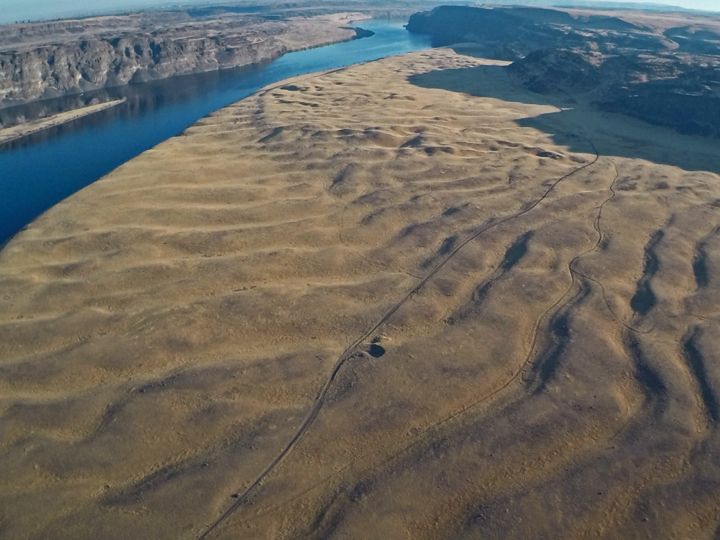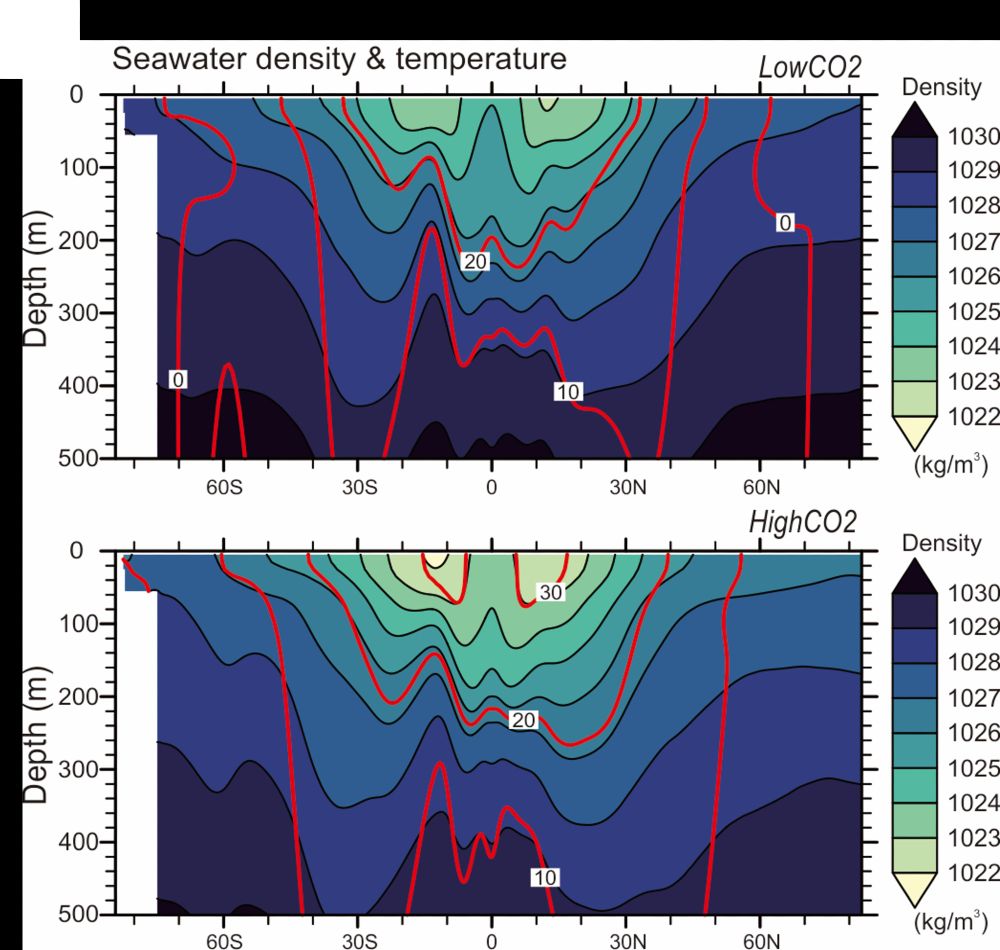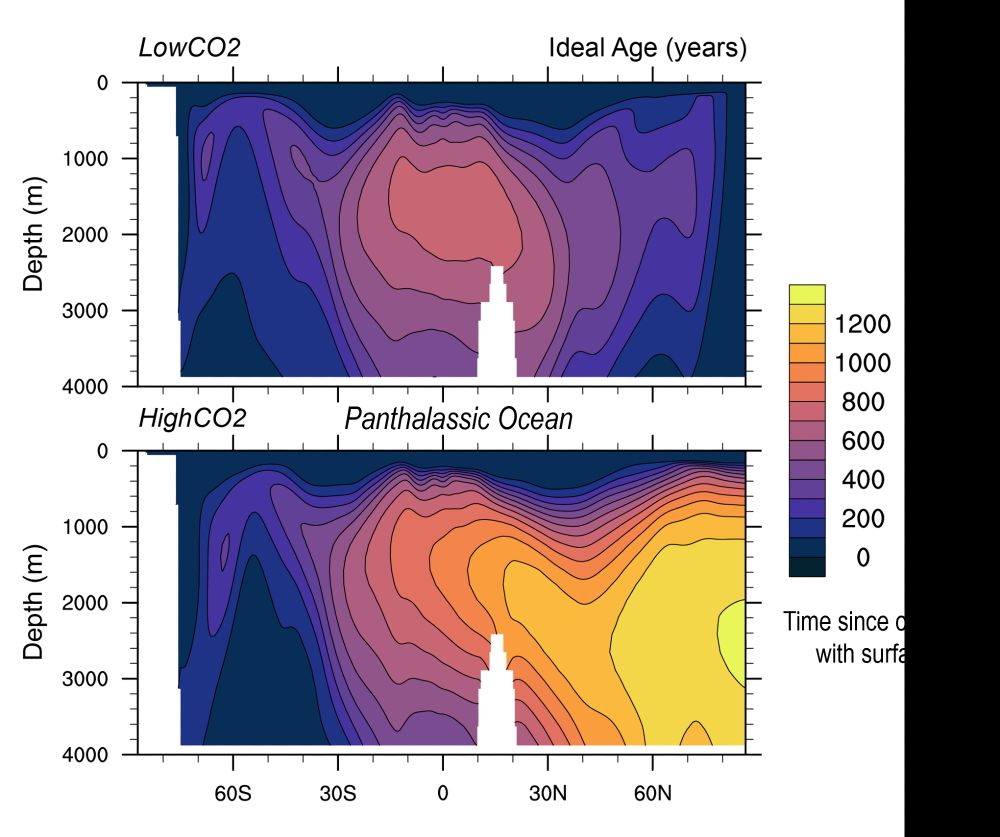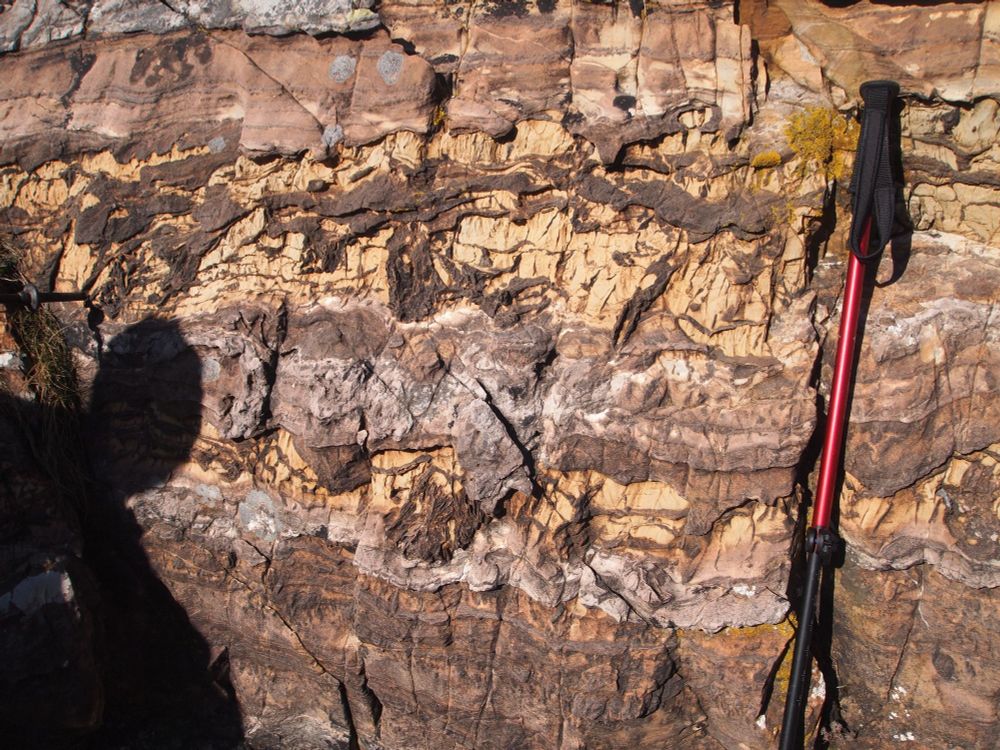

Come to the Fossil Grove this Sunday (15th) - anytime 12-4. Come and hear about what's going on with the renovation programme. Tours of the quarry area. Children's activities. Displays and fossils. (Note: The building itself is closed).
www.fossilgroveglasgow.org
11.06.2025 21:57 — 👍 1 🔁 0 💬 0 📌 0

Until about 425,000 years ago, Great Britain was joined to Europe by a narrow isthmus along the Weald-Artois anticline, a fold consisting of the Cretaceous chalk that is today cut at the cliffs of Dover in England and the Cap Blanc Nez near Calais in France. As Baker discusses in the podcast, a large glacial lake formed south of an ice cap spanning northern Britain and Scandinavia. This lake eventually breached the isthmus, resulting in a megaflood that eroded what is now the seafloor below the English Channel into a steep-sided inner channel and plunge pools.

Map view (right) and topography (below right) of the Kasei Vallis megaflood channel. Kasei Vallis is the largest of the Martian outflow channels, about 3,000 km long and up to as much as 400 km wide in the areas shown at right.

Rock basins eroded into Columbia River Basalt at Lenore canyon, Lower Grand Coulee in the Channeled Scabland of Eastern Washington. Note the roads for scale.

Giant current ripples at West Bar, near Trinidad, Washington.
🧪⚒️I just posted an episode on megafloods with Vic Baker, a pioneer in the field. Megafloods are cataclysmic events that devastate the landscape. The Mediterranean Basin was filled by two successive megafloods. And a Black Sea megaflood might be the basis for the Biblical account of Noah's flood.
13.04.2025 14:54 — 👍 43 🔁 11 💬 2 📌 0

Microwave image of a protoplanetary disk surrounding the young star HL Tauri. The disk includes gaps possibly cleared by amalgamation onto newly-forming planets. This image was taken by the Atacama Large Millimeter/submillimeter Array interferometer, consisting of 66 radio telescopes in the Atacama Desert of northern Chile.
ALMA (ESO/NAOJ/NRAO)

Artist’s impression of a region of a giant molecular cloud that is collapsing to form a protoplanetary disk of gas and dust. A star forms at the center of the disk, and planets form out of the disk.
NASA/JPL CalTech

Plot of various solar system materials. The plot shows that the isotope ratios of hydrogen (D/H) and nitrogen (15N/14N) on Earth are very different from those of comets but quite similar to those of a certain class of meteorites called enstatite chondrites. If comets had delivered Earth’s water, they would have changed its nitrogen isotopic ratios as well as its hydrogen isotopic ratios. Isotopic fingerprinting strongly suggests that Earth’s water has come from the enstatite chondrites.
Marty, B. (2012), Earth and Planetary Science Letters 313, 56
🧪⚒️New episode - Lindy Elkins-Tanton on the origin of Earth's water. Only about 0.02% of the Earth is water, but even that's been a puzzle as Earth formed within the snow line where no liquid water would have been present. Isotopic analysis provides the clues to resolve this apparent paradox.
27.03.2025 19:46 — 👍 12 🔁 3 💬 3 📌 2

The Geology of Colonsay | Geological Society of Glasgow
by David Webster
Change to lecture programme tonight. David Webster will talk about the geology of the island of Colonsay. Palaeoproterozoic basement, the overlying Colonsay Group and spectacular igneous intrusions plus the earliest radiometric dating and 'granitisation'.
geologyglasgow.org.uk/event/colons...
13.03.2025 07:07 — 👍 2 🔁 1 💬 0 📌 0

Results of the Earth-System Model for atmospheric CO2 levels of 280 parts per million (ppm) and 560 ppm for the late Paleozoic. Top row: sea ice forms at 280 ppm but not at 560 ppm. Bottom row: at 280 ppm, the late-winter mixed layer of the ocean is moderately deep but becomes much shallower at 560 ppm.

Simulations show the response of seawater density & temperature by depth for a doubling of CO2. Sea surface salinity (i.e., density) increases at low CO2 due to sea ice formation, which excludes salt, thus creating briny water, whereas at high CO2 less sea ice formation leads to decreased density overall.

Plots of oceanic depth vs. latitude of the time since a water mass has been in contact with the surface.
Younger ages in shades of purple indicate well-ventilated waters, whereas older ages in orange and yellow indicate poorly ventilated waters that typically correlate with low dissolved O2 in the deep ocean.
Together with the sea ice and mixing depth results, this suggests the onset of widespread seafloor anoxia during the CO2-forced warming despite being under deep glacial conditions.
🧪⚒️I just posted an episode about using the late Paleozoic ice age as an analog to climate conditions today. It was similar in that there was low but rising CO2 and continental ice sheets. Her models suggest possible major ocean anoxia and dramatically increased runoff as CO2 climbs.
08.03.2025 18:55 — 👍 14 🔁 4 💬 2 📌 0

Species loss, community collapse and ecosystem recovery during times of mass extinction | Geological Society of Glasgow
Dr Alex Dunhill, University of Leeds
Our next lecture is on Thursday 6th February at 7pm in Room 407 of the Boyd Orr Building, University of Glasgow. Dr Alex Dunhill will talk on "Species loss, community collapse and ecosystem recovery during times of mass extinction" geologyglasgow.org.uk/.../species-...
All welcome.
31.01.2025 20:03 — 👍 6 🔁 2 💬 0 📌 2

@bobgooday.bsky.social bob, any idea about this rock? i was sent a photo and would like to get back to the sender. its from lamlash on arran so immediately thought of you! i think some form of explosion breccia with a carbonate infill? thanks
28.12.2024 21:52 — 👍 3 🔁 0 💬 1 📌 0
YouTube video by Geological Society of Glasgow
The taphonomy of a pantodont-rich assemblage from the San Juan Basin, New Mexico, USA
Here is a link to a recording of last Thursday's lecture given by Paige dePolo on pantodonts (weird early mammals) from New Mexico. Its well worth a view, she was very entertaining and knowledgeable! youtu.be/RWamAw6uo10
14.12.2024 18:37 — 👍 7 🔁 5 💬 0 📌 0
I'm rewriting my islay geology guide and looking for advice on updating it for accessibility. Sorry to add to your inbox and hope you get better soon..
11.12.2024 15:46 — 👍 1 🔁 0 💬 0 📌 0


Next Lecture at the Geological Society of Glasgow. Thursday 12th December at 7pm. Room 407 Boyd Orr Building. ALL WELCOME!
Dr. Paige dePolo, Liverpool John Moores University
“The taphonomy of a pantodont-rich assemblage from the San Juan Basin, New Mexico, USA”
geologyglasgow.org.uk/event/the-ta...
30.11.2024 11:57 — 👍 5 🔁 2 💬 0 📌 0

Nice anticline in metagreywackes at Saligo Bay, Islay. The area is known as The Arches' after the fold. Colonsay Group (earliest Dalradian, c. 800 Ma) #fridayfold
22.11.2024 19:34 — 👍 10 🔁 1 💬 0 📌 0
Is #thinsectionthursday officially a bluesky thing? Very happy if it is.. learnt a lot from it on the dark side.
21.11.2024 17:00 — 👍 2 🔁 0 💬 1 📌 0
Good to see a bit of Scottish rock from Islay in your collection! Look out for new Geol Soc memoir on the Port Askaig Fm next year
20.11.2024 11:49 — 👍 6 🔁 0 💬 1 📌 0

Geological Society of Glasgow
Geological Society of Glasgow's YouTube channel for previous lecture recordings etc.
www.youtube.com/channel/UCfN...
19.11.2024 14:20 — 👍 1 🔁 2 💬 0 📌 0
YouTube video by Geological Society of Glasgow
The abyss gazes also into you: exploring the deepest oceans
A link to the November 2024 Lecture by Heather Stewart on "The abyss gazes also into you: exploring the deepest oceans"
youtu.be/-6b9bi-AehM
19.11.2024 14:07 — 👍 3 🔁 2 💬 0 📌 0

New paper helps tie down the start, age and duration of the Cryogenian 'Sturtian' glaciation. Zircons in the Port Askaig Formation from the Garvellach Islands show YSG younging-upwards and help the case for a 'Golden Spike' there. For now we make do with a golden carrot! doi.org/10.1144/jgs2...
23.08.2024 10:11 — 👍 4 🔁 1 💬 0 📌 0

Geological Society of Glasgow Monthly Lecture - Thursday 14th March 2024
Dr. Murray Reid,
“What lies beneath: the geology of Strathkelvin”
Boyd Orr Building 7.00 pm
05.03.2024 20:05 — 👍 1 🔁 0 💬 1 📌 0
Probably the best geo-themed whisky in the world. Geological cross section on the label, hard water through calcareous jurassic sst, and cast of ammonite slab used to make the bottle. Whisky is great too!
17.02.2024 20:03 — 👍 3 🔁 0 💬 0 📌 0
A recording of a lecture given by Toni Galloway of St Andrews University to the Geological Society of Glasgow on 8 Feb 2024.Toni’s PhD research currently foc...
Biogeochemical cycling of essential elements within Mars analogue sites
Recording link here youtu.be/JrBoDYrsHfs
10.02.2024 13:13 — 👍 0 🔁 0 💬 1 📌 0

We find these in the 650 Ma Bonahaven Formation on Islay. We call them Flake Breccias ie bits of ripped up or wind-blown microbial mat deposited in dessication cracks ...aka flake pockets.
10.02.2024 13:06 — 👍 3 🔁 0 💬 0 📌 0
Email sec@gsocg.org for zoom link
02.02.2024 20:04 — 👍 0 🔁 0 💬 0 📌 0

Geological society of glasgow - Next lecture Biogeochemical cycling of essential elements within Mars analogue sites by Toni Galloway (St Andrews). Thursday 8th Feb 19:00 by zoom.
us02web.zoom.us/j/87137408991?…
02.02.2024 20:02 — 👍 2 🔁 1 💬 1 📌 1
I've listened to every episode, some many times. They get me up and down mountains. Essential listening for any earth scientist. Thanks oliver.
27.11.2023 09:05 — 👍 1 🔁 0 💬 0 📌 0
A diverse group of Calgarians coordinating & mobilizing local climate change action. #yyc #yyccc #ClimateChange #ClimateAction #ClimateSky
At @GeoTdF.bsky.social we answer your questions on landscapes and geology cycling races | see Geo-Sports.org for more information!
Science, Geology, Volcanology, Geochemistry, Meteorites.
Sci Fi fan, Anime and Fantasy, Tolkien.
Birder and all things nature.
Somerset.
Keeping you posted on space science activities from the European Space Agency.
Web: http://www.esa.int/science
Privacy Notice: esa.int/connectwithus
#astronomy #space #science
Our readers have understood the concept of Buyer's Remorse since 1979.
Buy the Profanisaurus or Subscribe here: https://lnk.bio/vizcomicofficial
The magazine of the Geological Society of London (@geolsoc.bsky.social), with news, views, and features for the community.
Website: https://geoscientist.online/
Pitches: geoscientist@geolsoc.org.uk
Astronomer Royal for Scotland, Professor of Astrophysics, Edinburgh University. Director of the German Centre for Cosmological Lensing, RUB. #LongCovid (She/her)
PhD student in Igneous Petrology - studying magma mixing and mingling | Trinity College Cambridge 🌋⚒️ | Full time crutch/wheel user | ♿️ #CRPS | #DisabledinSTEM #geology #volcanology
https://linktr.ee/FrankieButler
Doctor/Anaesthetics/PHEM/Broadcaster. Likes to know how systems tick & what we can do to improve them. Interested in just about everything. #13MinutestotheMoon #16Sunsets
Glasgow dwelling Edinburgh boy. Shareholder, part owner HMFC. NB NOT a former Green Party politician.
Two books published this year - Normally Weird & Weirdly Normal and poetry collection Ice Cream for a Broken Tooth
New special, “Tragedy Plus Time”, now available at edbyrne.com
Grazer and nibbler at the outer edges of new social media platforms
Spy. Dammit! Ex-spy.
Is it about work? Please contact: Rob Aslett roba@avalonuk.com
Avi pic by Clara Wolden. Background pic designed by Gentleman Jim Gloster.
I had a marvellous time ruining everything.
Scientist. President of @Humanists_UK Lecturer in Genetics @UCL
Genetics, race, eugenics, books, cricket, +–=÷×
@kbjmanagement
adamrutherford.com
Prof of Public Engagement in Science, Uni of Birmingham; anatomist, author, broadcaster; vice President of Humanists UK. All views my own.
Physics, bubbles, oceans, hot chocolate and curiosity. Professor at UCL, writer, broadcaster. Author of Storm in a Teacup and Blue Machine https://linktr.ee/helenczerski Co-host of BBC Radio 4's Rare Earth
Opinionated gobshite, stroke survivor, older gay man, Scottish independence supporter, columnist with @scotnational.bsky.social huge languages and linguistics geek. Blog at https://weegingerdug.wordpress.com Not interested in your crypto investment.
Former Curator of Mineralogy and Petrology. MSc in Volcanology. Views are my own.







































